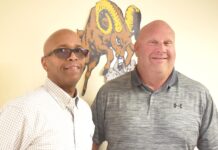Erin Richards, an education reporter for USA Today, published a Feb. 29 article about the lack of success realized in American K-12 education in mathematics. Her article was entitled “Math scores stink in America. Other countries teach it differently — and see higher achievement.”
The lead paragraph in her story stated, “The latest results of an international exam given to teenagers ranked the USA ninth in reading and 31st in math literacy out of 79 countries and economies. America has a smaller-than-average share of top-performing math students, and scores have essentially been flat for two decades.” Her investigation revealed how other countries teach math much differently than we do here, and their results are significantly better. Perhaps we can learn from Richards’ reporting.
One example of these differences is the American “geometry sandwich,” where U.S. secondary schools teach a geometry course sandwiched between two algebra courses. Other developed countries teach three years of integrated math instead of the sandwich. Integration blends various strands of math curriculum, not only tying together the curriculum, but allowing the use of math in practical applications.
One particular part of mathematics that is omnipresent in foreign programs is statistics or data science. Data-driven problems can use many areas of the math curriculum to solve real problems in everyday environments. Richards provides an example of a nation that has made radical changes in the teaching of math and has reaped positive results.
“Estonia students ranked first among European countries in mathematics, as well as reading and science, on the 2018 Programme for International Student Assessment. Many factors may have helped: The country offers high-quality early childhood education to all kids, class sizes are small, and there’s little high-stakes testing, leaving more time for instruction.”
The report highlights the correlation between how math is taught in the elementary grades and student performance in high school. To be honest, how mathematics is taught in our schools is dictated by the state, and local districts can do little without state direction.
This report should motivate those who care about the mathematical achievement of our students to inundate state legislators with requests to review this report and take actions needed to allow Arizona high school graduates to be competitive with those from Estonia.
Murray Siegel, Ph.D., has 44 years of experience teaching mathematics. He is a volunteer at Butterfield Elementary School.
This column appears in the May issue of InMaricopa.















![Affordable apartments planned near ‘Restaurant Row’ A blue square highlights the area of the proposed affordable housing development and "Restaurant Row" sitting south of city hall and the Maricopa Police Department. Preliminary architectural drawings were not yet available. [City of Maricopa]](https://www.inmaricopa.com/wp-content/uploads/2024/04/041724-affordable-housing-project-restaurant-row-100x70.jpg)


